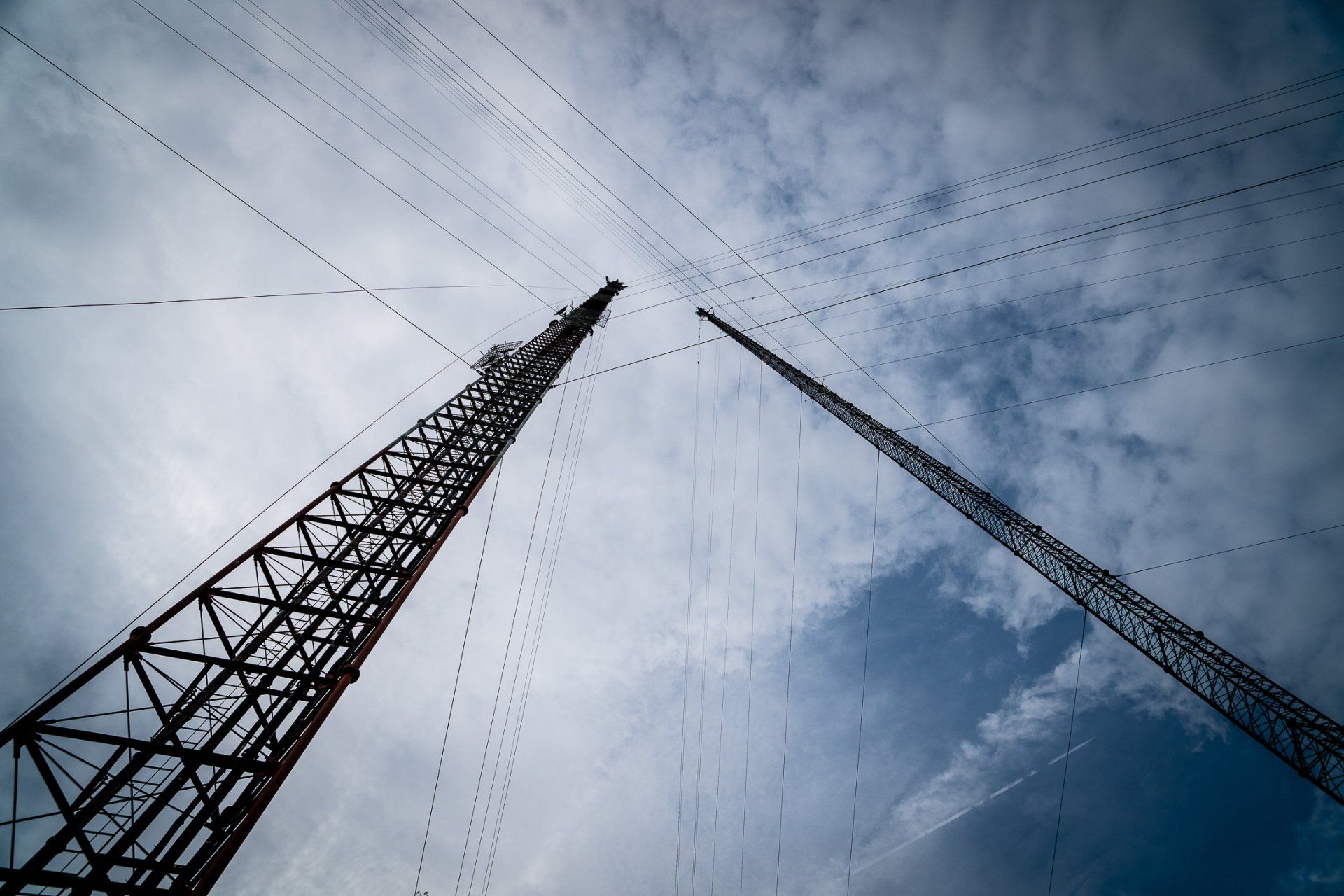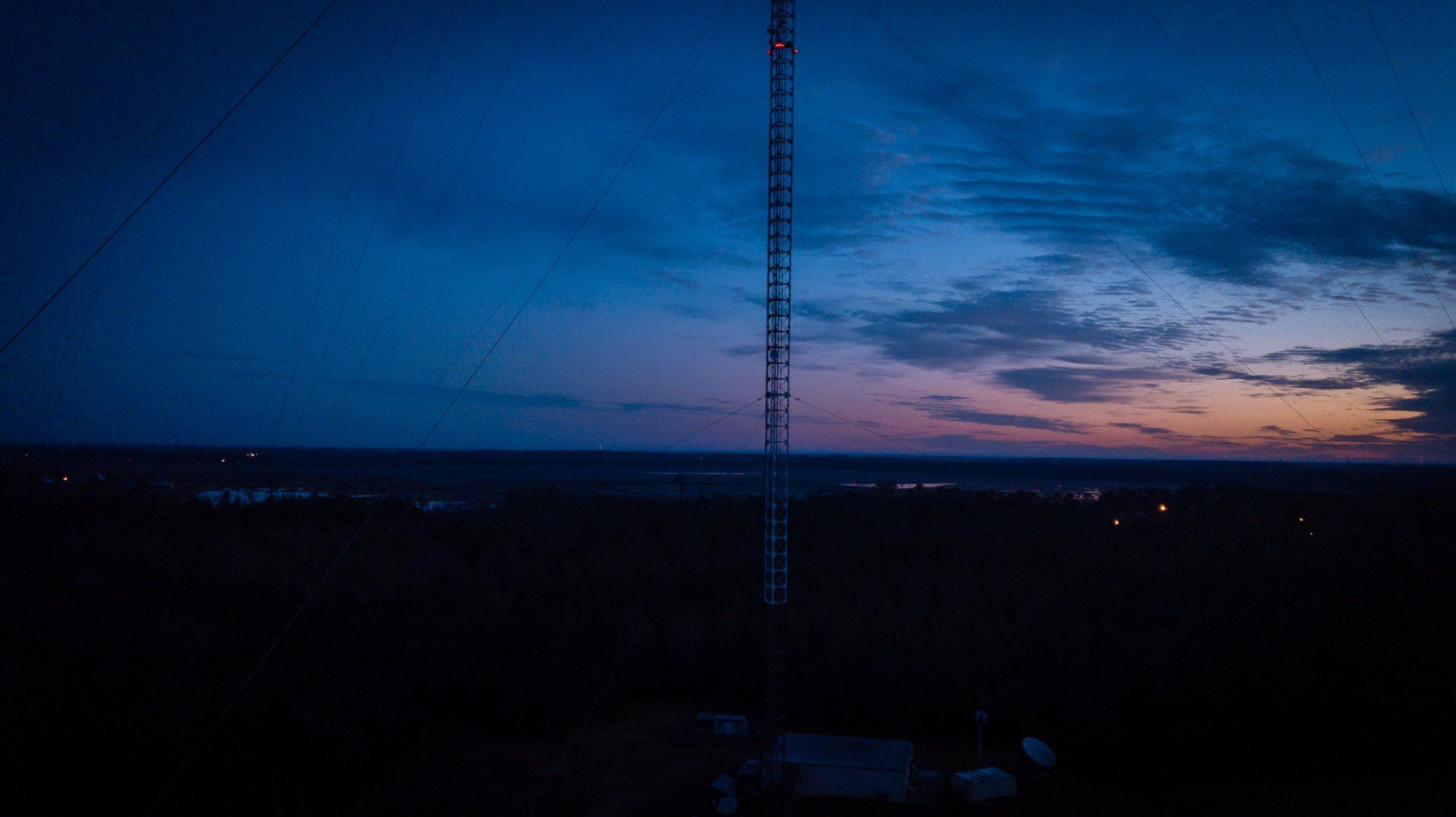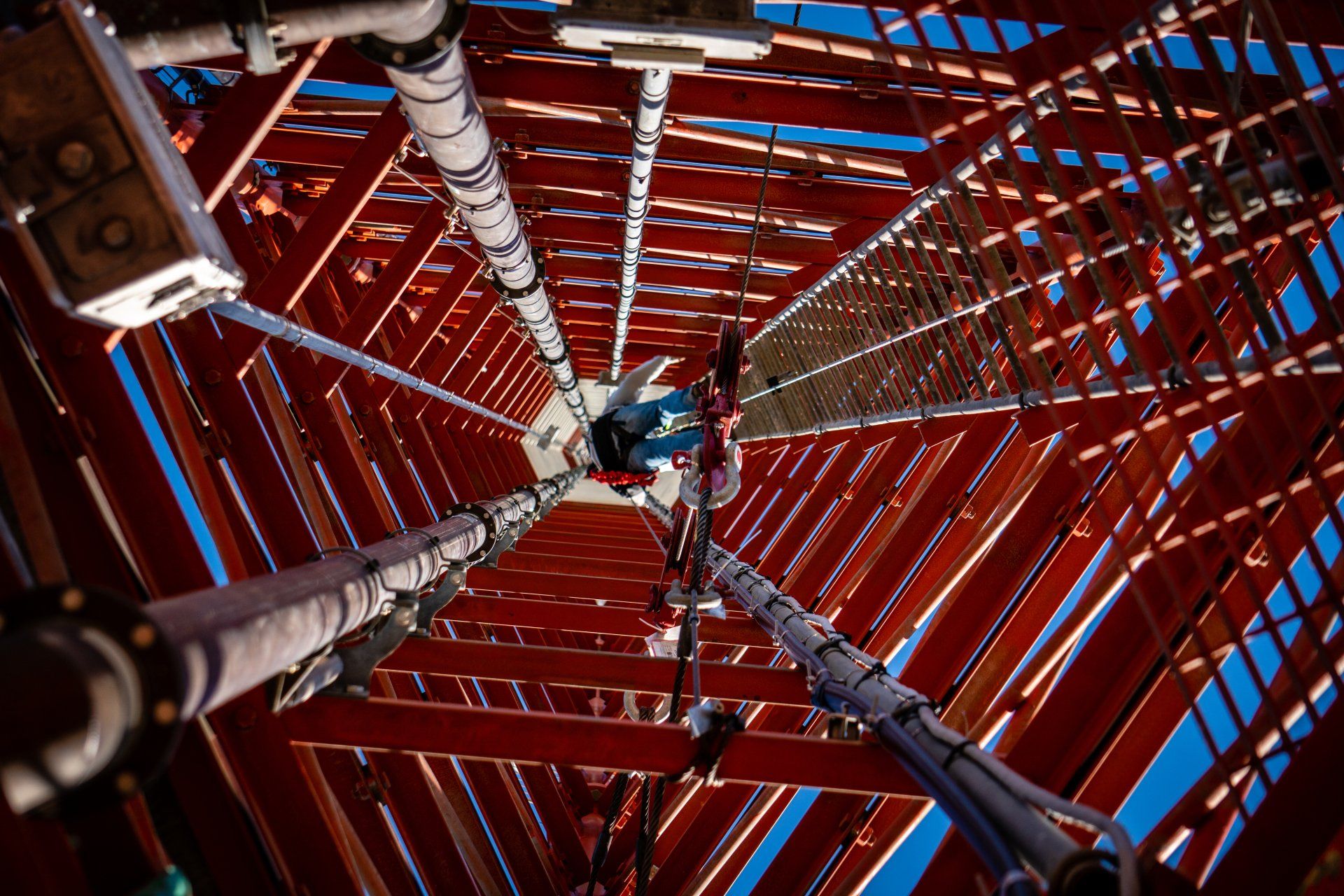Drake Lighting
Obstruction lighting considerations for tall towers
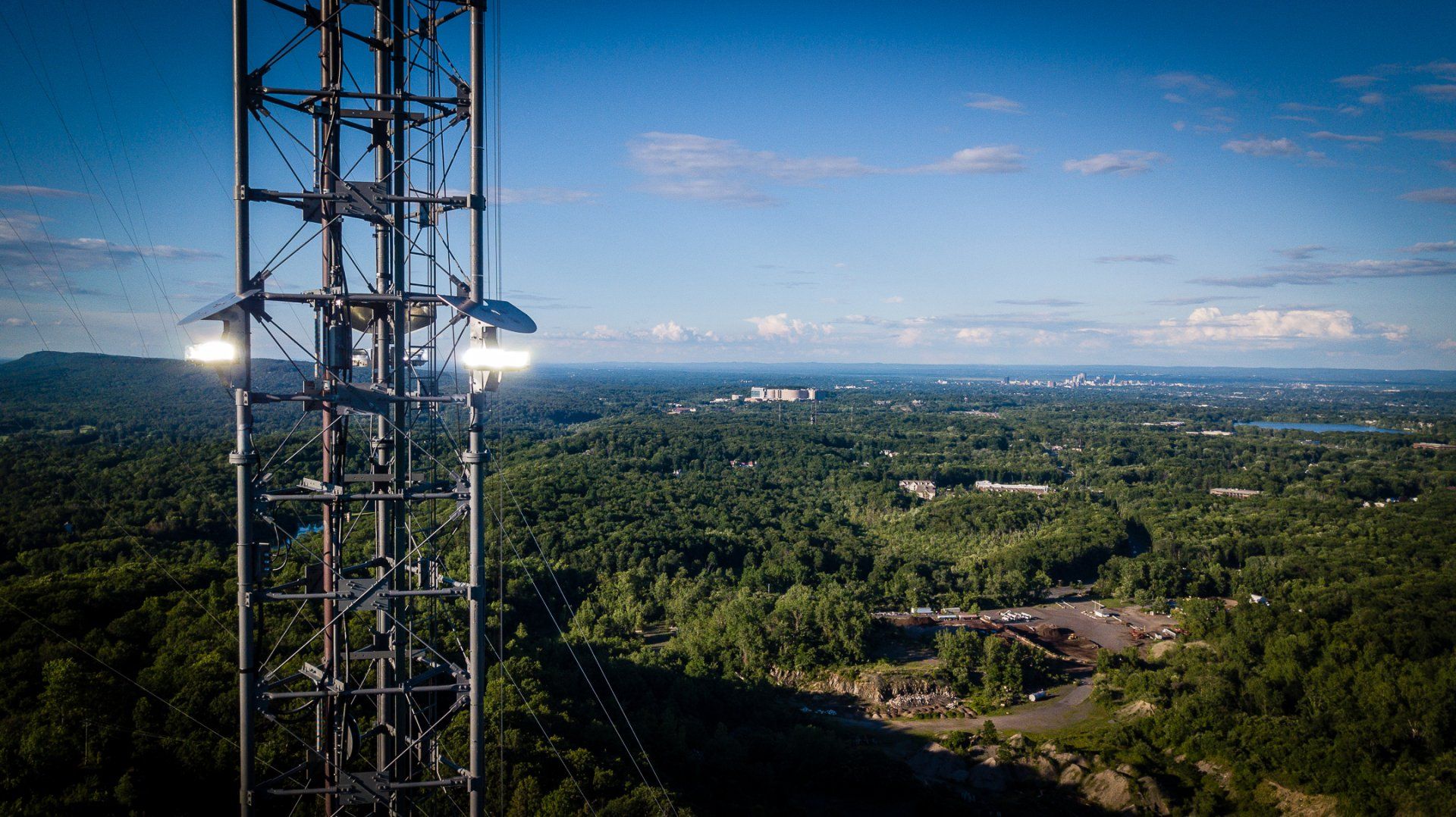
Presently, there are 42,000+ tower sites nationwide, with 1,700+ sites already used by broadcasters. The tallest broadcast tower in the Western Hemisphere is the KVLY-TV mast in Blanchard, North Dakota, 2,063 ft tall.
One of the largest considerations faced by broadcast engineers is to ensure no broadcaster violates lighting violations. Violation of these standards can result in a hefty fine.
For example, a broadcast group was fined $1.13 million in 2020 for inadequate maintenance and monitoring of its towers. In 2020, the FCC issued three fines to three different broadcasters, compared with 7 in 2016.
That said, we’re going to look at a style of lighting to consider when lighting broadcast towers.
Let's dive in!
The Regulations
The US Congress authorizes the Federal Communications Commission (FCC) to implement mandatory standards for lighting and painting antenna towers or tall buildings that may constitute a risk or danger to air traffic.
While these standards are based on the advisory recommendations of the Federal Aviation Administration (FAA), in the case of antenna towers that require aviation obstruction lights, these standards are obligatory.
Violation of these standards can result in a hefty fine. For example, a broadcast group was fined $1.13 million in 2020 for inadequate maintenance and monitoring of its towers.
The FCC rules are mandatory for antenna towers operated by broadcast and other communication services providers and include specific requirements set out in Part 17 of the FCC rules.
Some of the most critical aspects of these requirements include:
- Observe the antenna’s lights a minimum of every 24 hours, either automatically or visually, to make sure all lights are working properly
- Inspect all the antenna’s mechanical and control devices, alarms, and indicators at the internals of no more than three months
Lastly, any lighting malfunctions not corrected within half an hour must be reported to the FAA and follow the FAA’s repair guidance, as specified in the FAA’s Notices to Airmen (NOTAM) period.
The Drake Lighting V2 High-Intensity System
The Drake Lighting V2 Intensity System has been specially manufactured to comply with all FAA recommended and FCC mandatory requirements. This lighting solution is:
- Powered
- Controlled
- Monitored
...on the ground because the electronics have been removed from the tower.
Lighting is easy to install and is low risk, meaning an engineer needs to climb the broadcast tower to maintain it is less likely.
Each high-intensity obstruction light in this system complies with all FAA recommendations and FCC mandatory requirements and is FAA certified. In addition, all the following lights come with a 5-year parts warranty.
They have an FAA L-856 and FAA L-865 high-intensity white obstruction light. At the same time, the FAA Style F and FAA Style G also has a medium intensity red light.
FAA Style B
This high-intensity white light shines at the same intensity during the day and at twilight, with a +/- 25% at night. It has a horizontal coverage of 120° and power consumption of 280 watts.
While weighing 55lb, it is designed with a metal-clad cable for fast and reliable installation to the broadcast tower. In addition, the optical design reduces ground disturbance.
There are no height restrictions because the power supply and control mechanisms are at ground level. However, two components are on the tower.
There are four FAA Style B lights to choose from, depending on the tower height:
1,050 ft: G3
1,400 ft: G4
1,750 ft: G5
2,200 ft: G6
FAA Style C
The FAA Style C AOL (aviation obstruction lamp) shares the same characteristics as the FAA Style B, including an operating temperature ranging from -40° to 131°F.
The difference is that while Style B rack dimensions are 23” x 87” x 31.5”, Style C’s are 23” x 87” x 31.5.”
Choose from the following four different Style C lights based on your tower height:
1,050 ft: C3
1,400 ft: C4
1,750 ft: C5
2,200 ft: C6
FAA Style F
The FAA Style F AOL model shares similar properties to Styles B and C. However, its LED light color is white by day and red by night. In addition, the rack dimensions are the same as those of Style C.
Depending on the height of the tower you’re maintaining, there are four FAA Style F lights to choose from:
1,050 ft: F3
1,400 ft: F4
1,750 ft: F5
2,200 ft: F6
FAA Style G
The FAA Style G AOL again has all the same properties as the lights mentioned above, but like Style F, it also is a dual light, white by day and red by night.
In addition to its optical arc-shaped lights, this style comes with a beacon light design. In common with all three other lights, there are four different Style G models depending on the tower height:
1,050 ft: G3
1,400 ft: G4
1,750 ft: G5
2,200 ft: G6
Other Types of Lighting Specific to Broadcast Towers
It is possible to source aviation obstruction lighting equipment for all broadcast buildings, including AM, FM, UHF, and VHF.
This includes aforementioned B, C, F, and G Style lights, L856 and L865 lights, as well as L864 and L810 lights:
Red Obstruction Lighting
Low-intensity red lights that are off during daylight hours. At night, the light is a flashing red beacon and a flashing red sidelight. These are suitable for a range of heights:
A0: 0-150 ft
A1: 150-350 ft
A2: 250-700 ft
A3: 700-1,050 ft
A4: 1,040-1,400 ft l
A5: 1,400-1,740 ft
A6: 1,750-2,200 ft
White Obstruction Lighting
Medium intensity lights emit white light by day using L865 white beacon and night using L-864 flashing white beacon. There are two styles available:
Style D1: for towers measuring 200-350 ft tall
Style D2: for towers measuring 350-700 ft tall
Dual Obstruction Lighting
Medium intensity lights emit white light by day and red lights by night, using the L-864/L-865 is flashing red night and white day beacon and the L-810 flashing red sidelight. There are two types of light available:
E1: for towers between 200-350 ft tall
E2: for towers measuring 350-700 ft tall
Are You Ready to Start Using Obstruction Lighting?
Hopefully, this article has addressed any questions you may have about obstruction lighting and the type of lighting you need for broadcast towers.
Drake Lighting is a customer-focused distributor of ETL-certified FAA-approved obstruction lighting solutions. Contact us now to learn more about our services and book a free, no-obligation assessment of your obstruction location.

